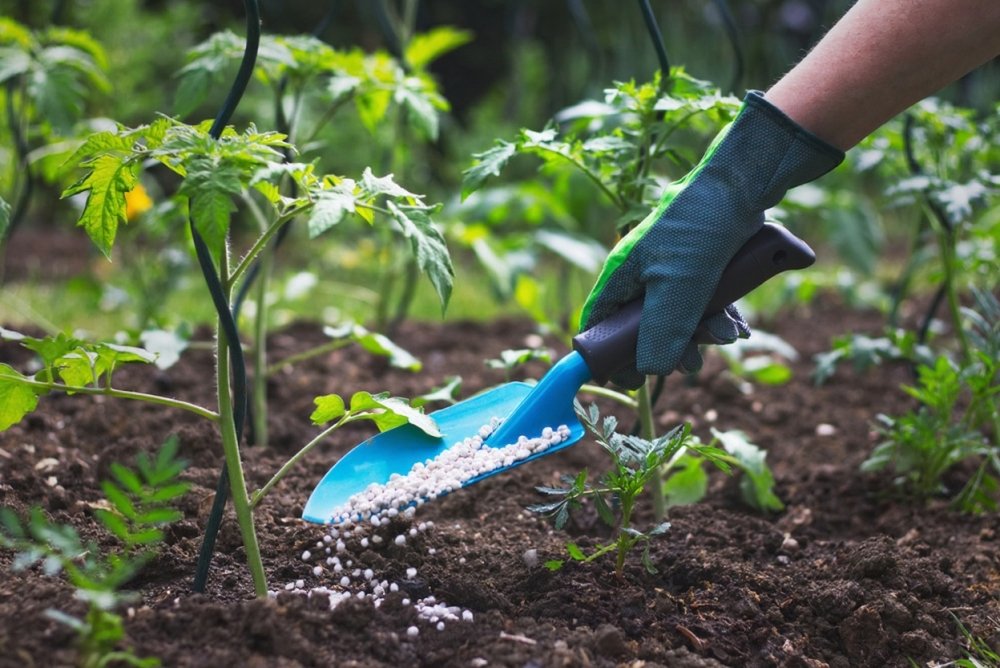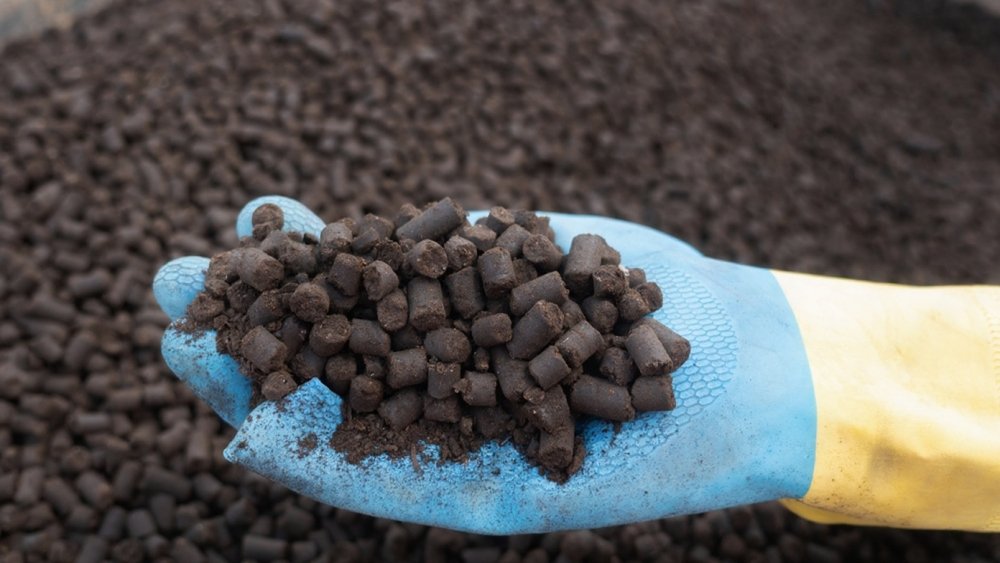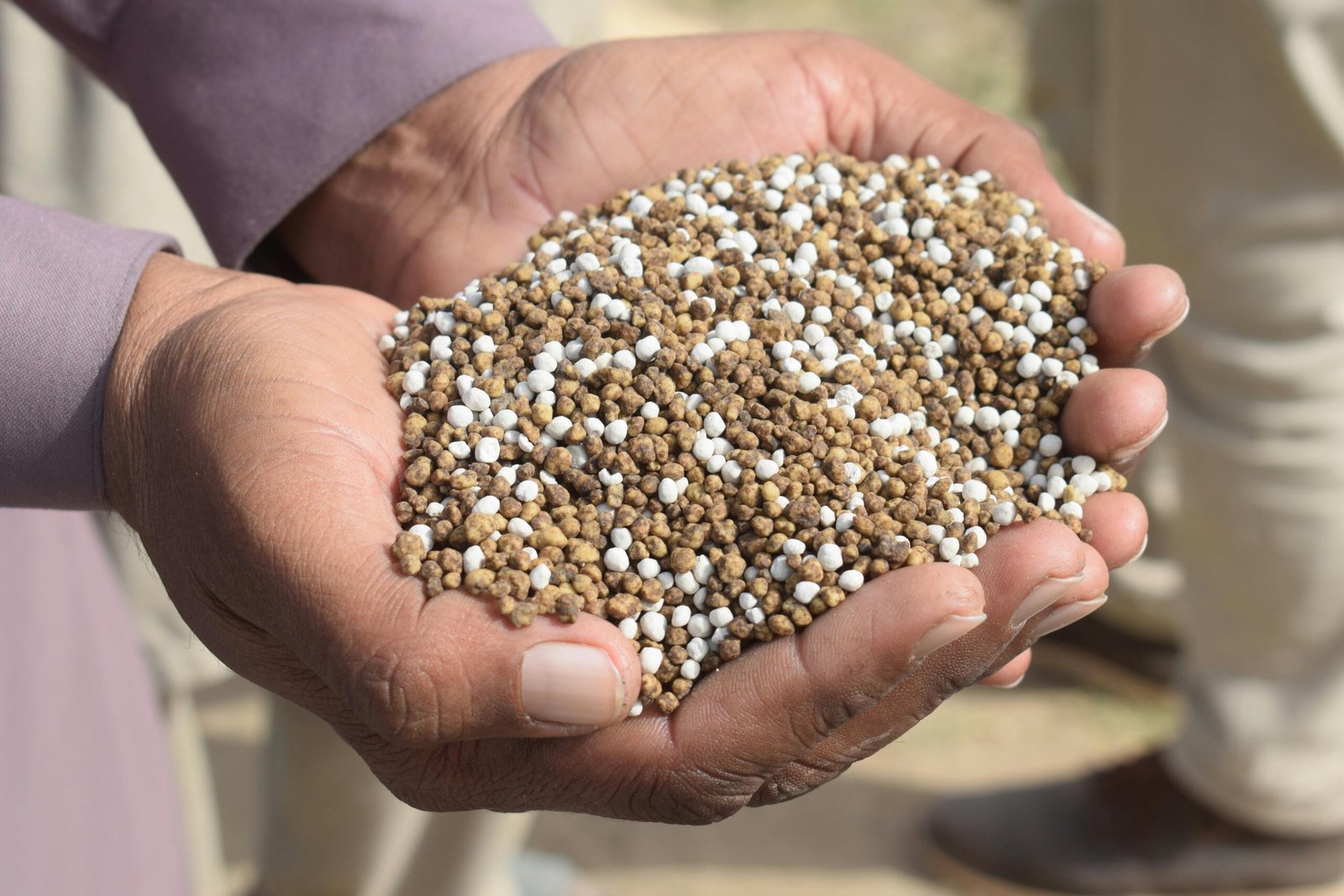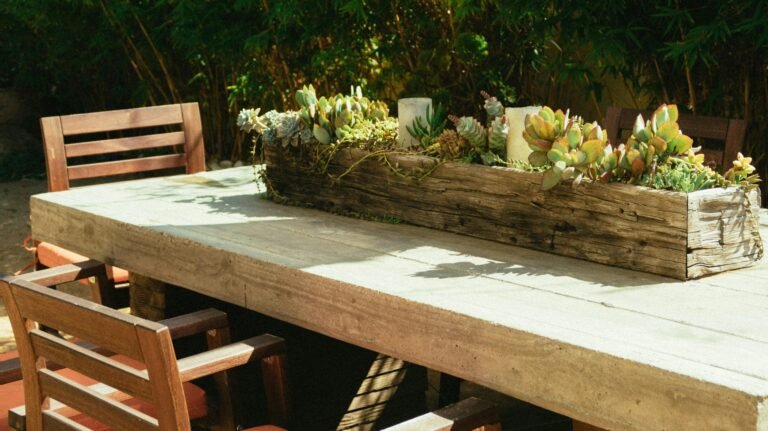You’ve probably stood in the gardening aisle, staring at rows of fertilisers with words like “organic,” “natural,” “slow-release,” and “all-purpose” plastered across the bags, wondering what actually works.
Maybe you’ve already tried composting. Maybe you’ve added a bit of manure or seaweed feed and hoped for the best. But your lettuces are still looking limp, your courgettes won’t bulk up, and your flower beds? A bit… meh. That’s where the best organic fertilizers make all the difference, feeding soil naturally and giving your plants lasting strength.
You’re not doing anything wrong – you just haven’t been given the right information.
That’s where this guide comes in.
I’ve pulled together the best organic fertilizers real gardeners swear by for rich soil, bigger blooms, and tastier harvests. Whether you’re growing veg in pots or flowers in a border, whether you’re a beginner or seasoned grower, you’ll find practical, no-fuss options here that actually help your plants thrive.
Let’s make your garden healthier, naturally – without wasting time, money, or effort — and using only the best organic fertilizers for reliable results.
What Makes an Organic Fertilizer ‘Organic’?
“Organic” sounds great on the label — but what does it actually mean when it comes to fertilisers?
In short: organic fertilisers come from natural sources — plant, animal, or mineral-based — and they feed your soil as much as they feed your plants. They work with nature, not against it. Organic fertilizers are also backed by the Soil Association – Why Organic?, which highlights how they protect soil health and biodiversity.
Unlike synthetic fertilisers (which are made in factories and give plants a quick chemical boost), organic options release nutrients slowly. This supports a healthy soil ecosystem, encourages beneficial microbes, and leads to stronger, more resilient growth over time.
Here’s what sets organic fertilisers apart:
- No synthetic chemicals. You won’t find artificial nitrogen, phosphorus, or potassium. Instead, nutrients come from things like compost, seaweed, fish emulsion, or bone meal.
- Soil health focus. According to the Royal Horticultural Society, organic fertilisers actively improve soil structure and support beneficial microbes.
- Slow and steady feeding. Rather than a quick growth spurt that fades, organic feeds nourish plants gradually — which helps avoid nutrient burn or pest issues.
- More environmentally friendly. They break down naturally, support biodiversity, and reduce runoff pollution.
In short: if you want tastier veg, brighter blooms, and better soil without harsh chemicals, organic is the way to go.
Ready for the good stuff? Let’s look at the best types of organic fertiliser for different needs.
Best Organic Fertilizer Types & Products
There’s no single “best” organic fertiliser — it all depends on your plants, your soil, and how hands-on you want to be. Below are the most trusted types, with real-world benefits and examples to help you choose what works for you.
1. Compost & Well-Rotted Manure
Best for: General soil health, long-term fertility, veggie beds
- What it does: Compost and manure remain two of the best organic fertilizers because they improve soil structure, add a wide range of nutrients, and boost microbial life.
- Use it when: You’re prepping beds for planting, or top-dressing perennials.
- How to apply: Mix into soil or use as mulch around plants.
- Top tip: Homemade compost is gold — but if you’re buying, look for peat-free options.
🪱 Bonus: Worm castings (aka vermicompost) are a concentrated version of compost — rich in nutrients and ideal for containers.
2. Seaweed-Based Fertilisers
Best for: Boosting growth, resilience, and flowering in veg and flowers
- What it does: Seaweed-based feeds are among the best organic fertilizers for flowers and vegetables, packed with trace minerals and natural growth hormones that stimulate root and leaf development.
- Use it when: Plants need a pick-me-up — especially after transplanting or in tough weather.
- How to apply: Mix liquid concentrate with water and spray or water in.
- Popular picks (UK): Maxicrop Original Seaweed Extract, Chase SM3
🌿 Why it works: Seaweed helps stressed plants bounce back faster and improves nutrient uptake — a great all-round tonic.
3. Fish Emulsion & Bone Meal
Best for: Leafy greens, root veg, and flowering plants
- What it does: Fish emulsion is high in nitrogen for leafy growth. Bone meal is one of the best organic fertilizers for flowers, adding phosphorus for strong roots and abundant blooms.
- Use it when: Plants are actively growing, or during flowering phases.
- How to apply: Water in liquid feeds every 2–3 weeks; sprinkle bone meal into soil at planting time.
- Brands to try: Growmore Fish, Blood & Bone; Vitax Bonemeal
🐟 Heads-up: Fish-based products can have a smell. Use carefully in shared or enclosed spaces.
4. Plant-Based Options (e.g. Comfrey Tea, Nettles)
Best for: DIY gardeners and organic purists
- What it does: Comfrey and nettles are nutrient-rich and make great liquid feeds.
- Use it when: You want a free, homemade fertiliser during the growing season.
- How to apply: Steep chopped leaves in water for 2–3 weeks, then dilute before use.
- Tip: Use gloves — especially with nettles!
🍵 Extra tip: These brews can smell rotten — store out of the way.
5. Pelletised & Packaged Organic Blends
Best for: Convenience, consistent results, beginners
- What it does: Ready-to-use granules or pellets with balanced NPK (Nitrogen, Phosphorus, Potassium) ratios.
- Use it when: You want fuss-free feeding for beds, borders, or containers.
- How to apply: Scatter and water in, or mix into compost.
- Reliable options: Vitax Organic Fertiliser, Westland Organic Chicken Manure Pellets
🐔 Note: Chicken manure is nitrogen-rich — great for leafy growth, but go easy on flowering plants.
Each of these options works in different ways — and often, the best results come from combining a few. If you’d like more independent recommendations, BBC Gardeners’ World regularly tests different fertilisers for both vegetables and flowers. Next, we’ll break down which are best for veggies and which for flowers, so you’re feeding the right way for the plants you’re growing.
Once your plants thrive, don’t stop there: learn how to collect and reuse their seeds with Seed Saving for Beginners: 7 Easy & Essential Tips to keep your garden self-sustaining.
Best Organic Fertilizers for Vegetables vs Flowers
Not all plants are after the same nutrients. Your veg might be craving nitrogen for leafy growth, while your dahlias need phosphorus and potassium to bloom their socks off. Here’s how to match the fertiliser to the plant — without overthinking it.

🥕 For Veggies:
What they need: A steady supply of nutrients to support roots, leaves, and fruits — depending on the crop.
Top picks:
- Leafy greens (e.g. lettuce, spinach, kale):
→ High-nitrogen feeds like worm castings, fish emulsion, or nettle tea.
→ Helps boost lush, green foliage.
Worm castings and fish emulsion are consistently rated among the best organic fertilizers for vegetables, especially leafy greens. - Root crops (e.g. carrots, beets, onions):
→ Balanced or low-nitrogen feeds like compost, comfrey tea, or bone meal.
→ Too much nitrogen = big leaves, tiny roots. - Fruit-bearing plants (e.g. tomatoes, courgettes, peppers):
→ Feeds with more phosphorus and potassium — like seaweed extract, comfrey tea, or tomato-focused organic blends.
→ Encourages flowering and fruit development.
Honourable mention: Chicken manure pellets — great at bed prep stage for overall soil boost, especially for heavy feeders.
🌸 For Flowers:
What they need: Nutrients to fuel root strength, flower production, and vibrant colour — without encouraging too much leafy growth.
Top picks:
- Perennials and bedding plants:
→ Bone meal or flower-focused organic fertilisers (e.g. Vitax Organic Rose Feed).
→ Helps with root growth and sustained blooming.
Bone meal is widely considered one of the best organic fertilizers for flowers, especially roses and perennials. - Containers and hanging baskets:
→ Liquid seaweed or comfrey feed, applied every 1–2 weeks.
→ Keeps flowering plants vibrant and productive through the season. - New plantings:
→ Well-rotted compost + bone meal at planting time.
→ Encourages good establishment without shocking roots.
🌼 Quick tip: Go easy on high-nitrogen feeds with flowers — they’ll push out more leaves than blooms.
Want to boost your harvest even more? Check out Companion Planting Guide: Best Plant Pairings for a Healthier Vegetable Garden to naturally improve soil and plant performance.
DIY Organic Fertilisers You Can Make at Home
If you’d rather not fork out for bags and bottles, you’ve got options. Some of the most effective organic fertilisers are ones you can make yourself — often from garden waste or kitchen scraps. Here are a few that actually work:
1. Comfrey Tea
Best for: Fruiting vegetables, flowering plants
Why it works: Comfrey leaves are rich in potassium and phosphorus — key for blooms and fruit.
How to make it:
- Fill a bucket with chopped comfrey leaves (wear gloves — they’re a bit prickly).
- Cover with water and weigh the leaves down.
- Let it steep for 2–3 weeks until it turns dark and… pongy.
- Dilute 1:10 with water before using.
🌱 Use every couple of weeks during flowering/fruiting.
2. Nettle Tea
Best for: Leafy greens and general garden boost
Why it works: Nettles are loaded with nitrogen — great for foliage.
How to make it:
- Same method as comfrey tea, using young nettles.
- Steep for 1–2 weeks, then dilute 1:10 before applying.
🌿 Don’t apply too often to flowering plants — it’s nitrogen-heavy.
3. Banana Peel Fertiliser
Best for: Roses, tomatoes, and potassium-hungry plants
Why it works: Bananas are rich in potassium and other trace minerals.
How to use:
- Chop up banana peels and bury them in the soil near the roots.
- Or blend with water and pour around the base of plants.
🍌 A great zero-waste option, especially for flower beds and pots.
4. Used Coffee Grounds
Best for: Acid-loving plants (like blueberries, hydrangeas)
Why it works: Adds organic matter and a bit of nitrogen
How to use:
- Sprinkle directly onto the soil or mix into compost.
- Use in moderation — too much can compact the soil.
☕ Let them dry before use to avoid mould.
5. Eggshell Powder
Best for: Tomatoes, peppers, brassicas (plants that need calcium)
Why it works: Crushed eggshells add calcium and help prevent blossom end rot.
How to use:
- Rinse and dry shells, then grind into powder.
- Sprinkle into planting holes or around the base of plants.
🥚 Breaks down slowly, so think long-term benefit.
These DIY mixes are a handy addition to your soil care, but the best organic fertilizers for heavy feeders are still compost, seaweed, or bone meal.
How (and When) to Use Organic Fertilisers for the Best Results
You’ve got the right organic fertilizer — now let’s make sure you’re using it properly. Organic fertilisers work a bit differently to synthetics. They feed the soil as much as the plant, and they work over time — not overnight. Here’s what you need to know.

1. Timing is Everything
- Before planting:
→ Mix compost, well-rotted manure, or chicken pellets into the soil a few weeks before sowing or transplanting. This gives nutrients time to settle and activate. - During growth:
→ Use liquid feeds (like seaweed, fish emulsion, or comfrey tea) every 2–3 weeks to support plants through key growth phases — especially flowering and fruiting. - Mid-season boost:
→ Top-dress with compost or worm castings if plants are slowing down or looking pale. - After harvesting:
→ Add compost or mulch to beds to restore nutrients and prep for the next season.
🕐 Organic feeds aren’t instant. If a plant is severely underfed, results may take 1–2 weeks to show.
2. Application Tips
- Liquid fertilisers:
→ Dilute according to instructions (or 1:10 for DIY brews). Apply directly to soil or as a foliar spray in the cooler part of the day. - Granular or pelletised feeds:
→ Scatter around the base of the plant, lightly work into the soil, then water in. Avoid direct contact with stems. - Compost/manure:
→ Use as mulch or mix into beds. For containers, go easy — too much can affect drainage.
🌧️ Avoid applying just before heavy rain — it can wash nutrients away.
3. Watch for These Common Mistakes
- Overfeeding with nitrogen: Leads to leafy plants and fewer fruits or flowers.
- Feeding dry plants: Always water before applying fertiliser — especially liquids.
- Using too much at once: Organic doesn’t mean unlimited. Plants still get overwhelmed.
📌 If in doubt, feed lightly and more often rather than dumping it all in one go.
Getting the timing and method right makes a huge difference. Done properly, organic fertilisers quietly but powerfully improve your soil and plant health over time — no chemical shortcuts needed.
Wrap-Up: Pick What Works for Your Garden
You don’t need to become a soil scientist or spend a fortune to grow healthy veg and vibrant flowers. You just need to know what your plants need — and match that with the right organic feed.
Here’s a quick recap:
- For leafy greens: Go for high-nitrogen options like worm castings, nettle tea, or fish emulsion.
- For fruiting plants and flowers: Choose potassium- and phosphorus-rich feeds like seaweed extract, bone meal, or comfrey tea.
- For overall soil health: Compost and well-rotted manure are your best mates — especially long-term.
- For convenience: Try pelletised organic blends.
- For DIY lovers: Brew your own fertilisers using comfrey, nettles, banana peels, and more.
And remember — the secret to thriving plants isn’t just the fertiliser. It’s the consistency. A little, regularly, beats a lot, once in a while. Pay attention to how your plants respond, trust your instincts, and adjust as you go – that’s how you’ll truly find the best organic fertilizers for your garden.
Organic gardening isn’t about perfection — it’s about learning what works in your space, with your soil, and your goals.
Now go on — give your garden a proper feed with the best organic fertilizers and watch it flourish naturally.
Frequently Asked Questions (FAQ)
Alex is the creator of Homely Haven, a space dedicated to simple, stylish ideas for interiors and gardens alike. With a passion for cozy living rooms, inviting outdoor spaces, and practical DIY solutions, Alex shares tips and guides that help turn any house into a true home.
From budget-friendly decorating hacks to weekend garden projects, the goal is always the same: to inspire you to create spaces that feel personal, beautiful, and welcoming. When not writing, Alex is usually rearranging furniture, sketching new garden layouts, or exploring design trends for the next project.








